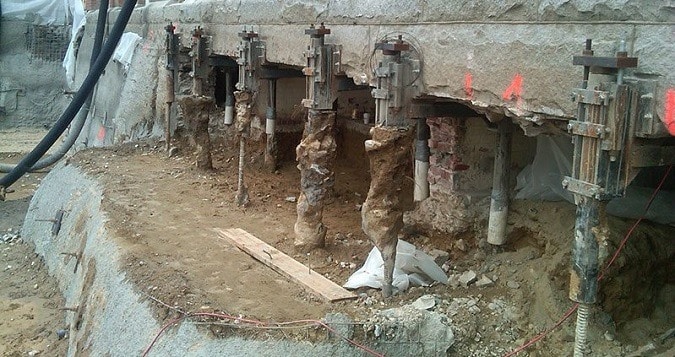Underpinning is the practice of expanding an existing foundation to increase its depth and safe load-bearing capacity, spreading out load across a larger surface area while protecting weak soil beneath. It helps distribute weight evenly over more surfaces while protecting weaker areas from sinking further below.
Starting with excavation to remove soil directly beneath existing foundations, steps are taken stepwise so as to not undermine structures.
Cost
Underpinning Melbourne can be costly in areas with loose soil or sediment. Longer piers are necessary in these circumstances, adding further to the cost. Furthermore, structural materials needed can affect this aspect of foundation underpinning costs.
Foundation underpinning involves excavating and extracting soil directly beneath a building’s footing in controlled stages to avoid undermining that could damage structural elements of the building. Once removed, this material is replaced by new foundation capable of supporting its weight.
Excavations are then filled with steel-reinforced concrete. Once this process has completed, hydraulic jacks are used to raise it to its desired height, filling in any gaps between existing foundation and newly laid one once it has set up. This method works well on expansive or soggy soils; earthquake damage, floods or drought damage repair, load bearing capacity increase.
Time
Underpinning requires excavating soil to make room for new concrete, so having a structural engineer carry out this work is essential for making sure your underpinning method fits the soil conditions in your building and to identify any risk of footing movement.
Underpinning methods typically require digging trenches beneath existing footing, which can be disruptive to daily household activities and time consuming and messy in their execution. Therefore, it is vital that you find an underpinning company who can work around your schedule efficiently.
Underpinning foundations usually uses either peat or bedrock soil, with peat consisting of decaying vegetation or organic material and having low load-bearing capacity and being subject to movement. Conversely, bedrock provides greater load bearing capability while offering greater weatherproofing protection – perfect foundation choices.
Soil Conditions
Foundation underpinning requires engineers to dig 2-foot, 6-inch-wide sections into the soil below an existing house foundation, called pins, which are spaced apart at 5-foot intervals and allow new concrete to be poured into them. Once this concrete has set up, any gap between pins and existing foundation is filled in using grout or mortar.
Underpinning is often necessary due to the nature of soil types; expandable ones swell when wet and contract when dry, creating movement in the ground that can result in structural damage to buildings; erosion-prone soil can wash away supporting materials leaving gaps through which foundations can sink in and cause differential settlement.
Other causes of uneven settlement may include changes in loading or the design of original foundations. Underpinning can help remedy this situation by increasing both depth and breadth of foundation, so that it sits more stably on more supportive soil strata.
Structural Materials
Foundation underpinning is an effective long-term solution for homes that may sink due to expansive soil, poor irrigation or other issues. It offers more permanent protection against sinkholes than short-term fixes like mudjacking or polyurethane foam injection.
An engineer will identify the materials necessary for your underpinning project, with their cost being a major factor in its total price.
The traditional mass concrete method is one of the cheapest and most efficient forms of underpinning. This involves excavating soil directly under an existing foundation and replacing it with concrete in small sections poured directly onto it; any gaps between this new concrete and existing foundation walls are filled later with cement grout to fill them out.
Contractors using the helical or slab pier method of underpinning for more severe conditions may use screw piers. These mechanically screwed-in piers penetrate the earth until reaching stable soil conditions; additionally they support lighter structures like patios and chimneys.

